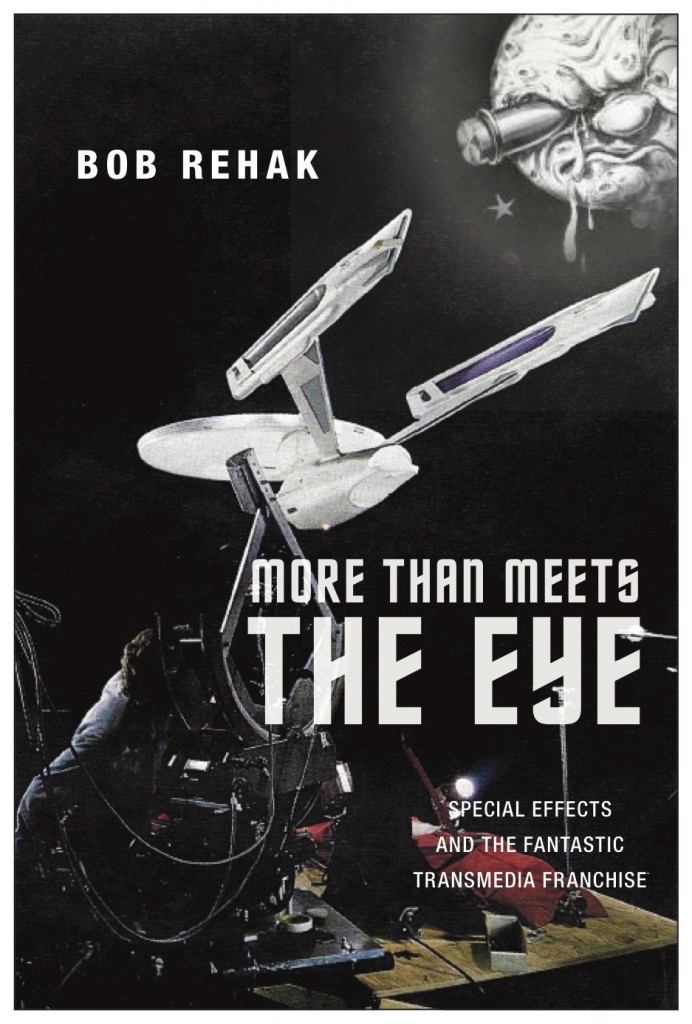I’m excited to be guest-editing a special issue of Transformative Works and Cultures on objects and artifacts in media fandom! The CfP follows.
Alongside its consumption and transformation of texts, media fandom has always been marked by its consumption and transformation of objects. From superhero figures, model kits, and wargaming miniatures for sale at hobby shops, to costumes and props worn at Comic-Con, material objects and body decoration have functioned as displays of textual affiliation, crafting skills, or collecting prowess, reflecting a long history of fan-created and -circulated artifacts around popular media fictions. While “mimetic” and “affirmational” practices seek to replicate the objects of fantastic media as faithfully as possible, other fan creations result in material mash-ups, expressing transformative impulses in artifact form. Regardless of orientation, object-oriented fandom represents a distinct strand within old and new activities and cultures, one whose intimate and often friendly relationship with corporate branding and ancillary market exploitation make it of central interest to an emerging body of scholarship on transmedia, convergence, and the franchise.
This special issue seeks historically and theoretically informed essays that explore the role of objects and their associated practices in fandom, as instances of creativity and consumerism, transformation and affirmation, private archive and public display. We are particularly interested in work that complicates or transcends the binaries of social vs. solitary, artwork vs. commodity, and gift vs. monetary economies to engage with object-oriented fandom as self-aware and playful in its own right.
We welcome submissions dealing with, but not limited to, the following topics:
- creating and collecting, buying and selling fan artifacts (production artifacts, memorabilia, reference materials, models, material fan art, and fan crafts…)
- cosplay (creating costumes and other artifacts, performing cosplay, competitions…)
- fan enactments, events, and embodiment (Renaissance Fairs, Quidditch competitions, re-enactments, fannish tattoos…)
- fan objects as paratext and transmedia extension
- dissemination of skills and abilities (workshops, online blogs, fan meetings…)
- object marketplaces (con, comic-book store, ebay, etsy…)
- evaluation and valuation of artifacts across the various economies of fandom
- impact of digital technologies (including social networking and 3D printing) on object creation, collecting, and cataloging
- new debates over authorship, ownership, and control
Submission guidelines
TWC accommodates academic articles of varying scope as well as other forms that embrace the technical possibilities of the Web and test the limits of the genre of academic writing. Contributors are encouraged to include embedded links, images, and videos in their articles, or to propose submissions in alternative formats that might comprise interviews, collaborations, or video/multimedia works. We are also seeking reviews of relevant books, events, courses, platforms, or projects.
Theory: Often interdisciplinary essays with a conceptual focus and a theoretical frame that offer expansive interventions in the field. Blind peer review. Length: 5,000–8,000 words plus a 100–250-word abstract.
Praxis: Analyses of particular cases that may apply a specific theory or framework to an artifact; explicate fan practice or formations; or perform a detailed reading of a text. Blind peer review. Length: 4,000–7,000 words plus a 100–250-word abstract.
Symposium: Short pieces that provide insight into current developments and debates. Non-blind editorial review. Length: 1,500–2,500 words.
Submissions are accepted online only. Please visit TWC’s Web site (http://journal.transformativeworks.org/) for complete submission guidelines, or e-mail the TWC Editor (editor AT transformativeworks.org).
Contact
We encourage potential contributors to contact the guest editors with inquiries or proposals: Bob Rehak (rehak.twc AT gmail.com)
Due dates
Contributions for blind peer review (Theory and Praxis essays) are due by March 1, 2013.
Contributions that undergo editorial review (Symposium, Interview, Review) are due by April 1, 2013.



